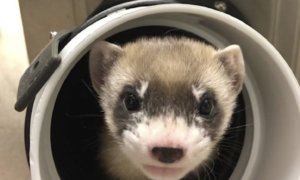The Sandiego Zoo has announced that they have achieved a ‘historic birth’ recently: that for a southern white rhino that had been conceived via a hormone-induced ovulation and artificial insemination.
The rhino’s mother, Victoria, gave birth to the calf on Sunday, in the bran at the Nikita Kahn Rhino Rescue Center and the best news is that the calf seems to be doing well so far and the two have bonded. Victoria had been inseminated with the semen from a white rhino back in 2018 and, while her species usually gestates for 485 days, Victoria carried her calf for a grand total of 493 days.
Artificial inseminations of southern white rhinos rarely go well and this is actually the very first time that it worked in North America.
“All of us at San Diego Zoo Global are elated with the arrival of this special rhino calf,” Barbara Durrant, Ph.D., Henshaw endowed director of Reproductive Sciences, at the San Diego Zoo Global has said of the event. “We are so pleased Victoria and the calf are doing well. She is very attentive to her baby, and the calf is up and walking, and nursing frequently. Not only are we thankful for a healthy calf, but this birth is significant, as it also represents a critical step in our effort to save the northern white rhino from the brink of extinction.”
The reproductive system of these rhinos is complex and there is still much to be learned about it, especially when it comes to artificial insemination. It’s also up to the white southern rhinos to serve as surrogates for the northern white rhino embryo as there are only two members of their species left and both of them happen to be female.
This new birth represents a huge step forward in the ongoing work to develop the knowledge necessary to genetically recover the northern white rhino. That is why the scientists have to work on setting apart the genetic divergence from the southern white rhino, which are the northern white rhino’s closest relative.
Another step they need to take is transform the cells that have been preserved from 12 northern white rhino males to stem cells that can be developed into sperm and eggs.
For the time being though, Victoria and the yet-to-be-named calf will be kept away from the public eye for a yet undisclosed period of time, to allow the two to bond even further. The calf will eventually be introduced to the other five female rhinos that live at the Nikita Kahn Rhino Rescue Center.
If all goes well, this type of fertilization could be further perfected and applied to other endangered species, such as the Sumatran and Javan rhinos.
Follow TechTheLead on Google News to get the news first.



















